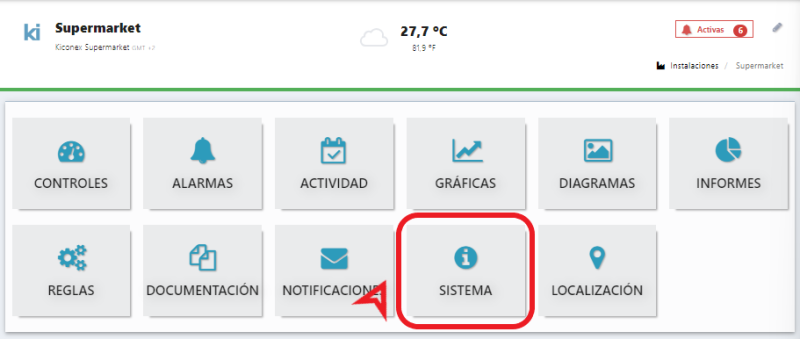System/en
De wiki.kiconex
System
The system section is important to obtain information about the kiBox deployed in the field and its main characteristics and status.
The System section indicates the technical information of the equipment, which can be accessed through the main menu or the main tabs.


Hardware information
- Hardware model: Indicates the model of internal electronic board that the kiBox has.
- Commercial model: Indicates the commercial model of the kiBox.
- Number of ports: Indicates the number of RS485 ports the kiBox has.
- Activity time: Indicates the time the kiBox has been active while running the software. This time is reset if the equipment is restarted by turning the power off and on again.
- Temperature: Indicates the internal temperature of the kiBox electronic board.
- Free RAM memory: Indicates the free RAM memory.
- Free HDD: Indicates the free space on the HDD hard disk.
- Network interface: Indicates the information of the network interfaces to which the kiBox is connected. There are eth0, eth0 and tun0, in each of them the obtained IP and the MAC address are indicated except in tun0 where the MAC is not shown.

Software information
- Daemon Version: Indicates the version of the kiDaemon service.
- Operating system version: Indicates the distribution and version of the operating system.
- UUID: Indicates the unique identifier of the facility. It has the option to copy to the clipboard for use in user registration, for example.
- Daemon Date: Indicates the date of the kiDaemon service version. It is important to always have the version as up to date as possible.
- Compilation options: Gives information about what extra packages are included in that software version (e.g. location for GPS geolocation of the facility).

Data update date
Indicates the date on which the data displayed in the system has been updated, as well as the time. By clicking on the "refresh" button, the last information is requested again from the board.

